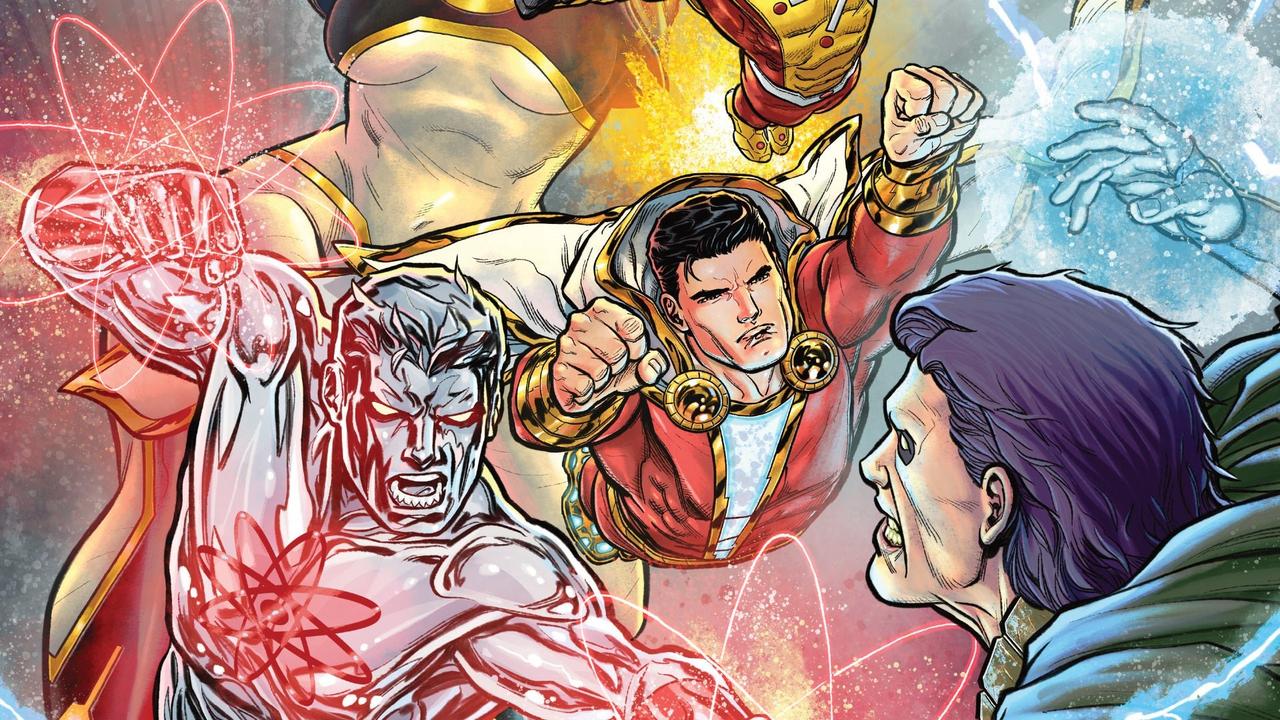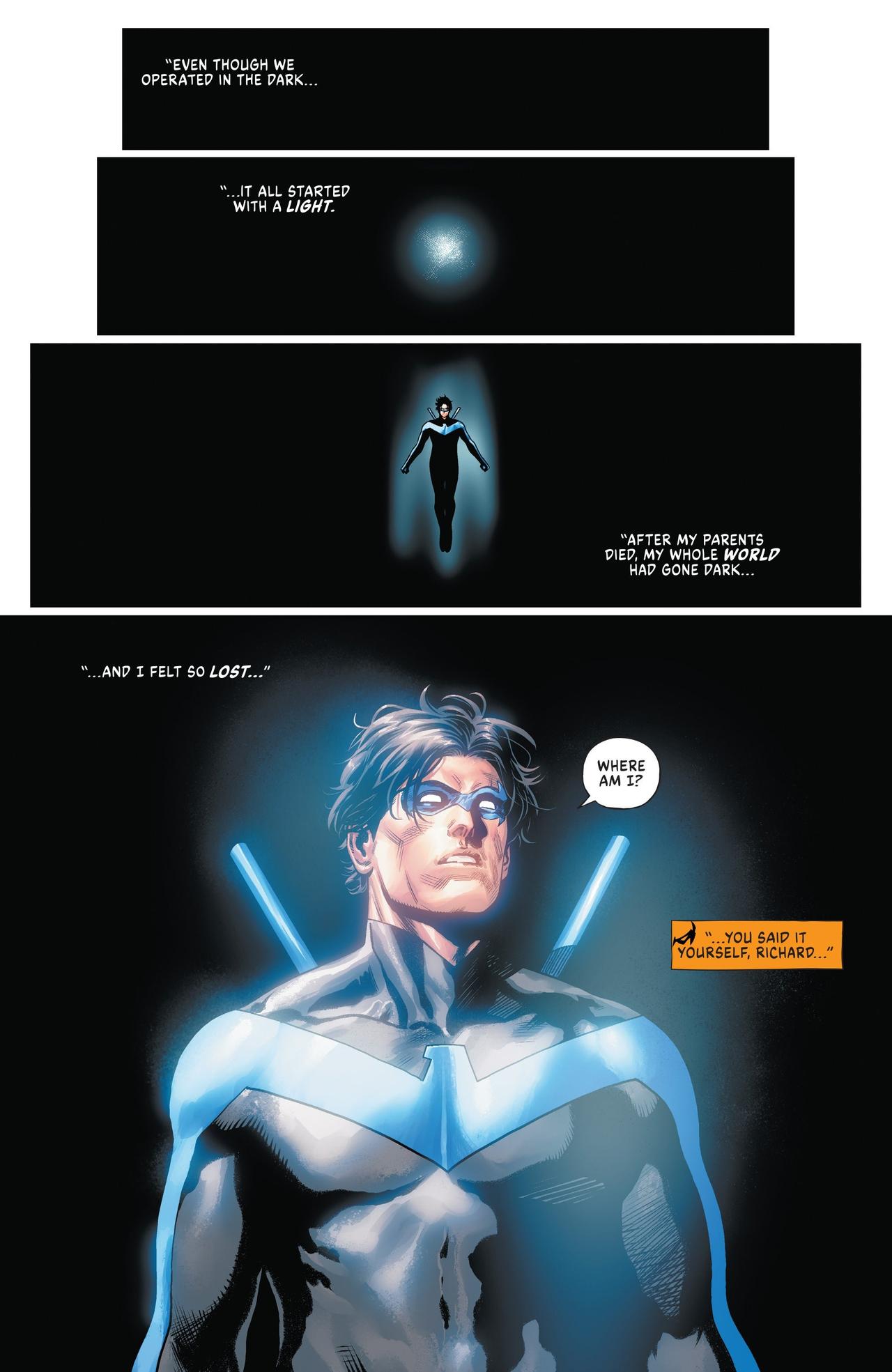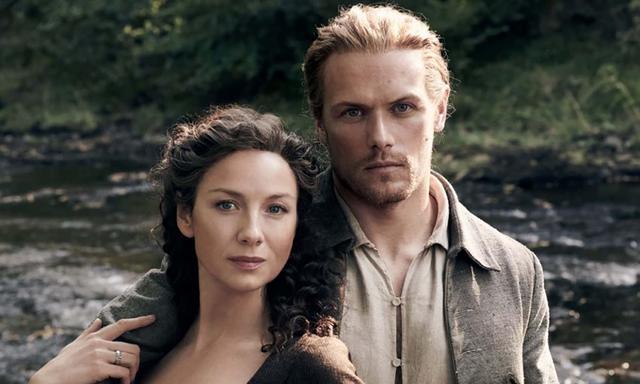If you click on a link and make a purchase we may receive a small commission. Read our editorial policy.
Dark Crisis on Infinite Earths #7: Joshua Williamson & Daniel Sampere unpack the crossover’s epic finale
With Dark Crisis on Infinite Earths complete, Joshua Williamson and Daniel Sampere explain the final issue’s big moments and how they stuck the landing with the crossover event.

Across seven issues, Joshua Williamson and Daniel Sampere have set up a new era for the DC Universe with their crossover event Dark Crisis on Infinite Earths. Balancing bombastically cosmic superhero action with intimate stakes, the story saw the rebirth of the infinite DC Multiverse, now no longer confined to 52 universes, with Nightwing and Black Adam leading the superhero community in the wake of the Justice League’s apparent demise.
Culminating in an epic showdown in front of the Hall of Justice, with a corrupted Deathstroke leading the fearsome Dark Army, the heroes emerged triumphant, with the Dawn of DC spinning out of the crossover’s fiery conclusion.
From Nightwing’s rematch with Deathstroke to Black Adam’s selfless hero play to turn the tide of battle, Dark Crisis on Infinite Earths #7 is packed with plenty of huge character moments and longstanding payoffs. And amidst all the sweeping superhero action, there are numerous callbacks to the history of the DCU and the crossover’s first issue.
By the time the battle ends, all of reality is saved and the Dark Army is disbanded but the DCU’s future is far from safe as familiar foes rise to take advantage of the resulting chaos.
In an exclusive, spoiler-filled postgame interview with Popverse, Joshua Williamson and Daniel Sampere explain Dark Crisis on Infinite Earths’ final issue’s major moments, share their favorite moments from the entire crossover, and tease how the event sets up the future of the DCU to unfold as part of Dawn of DC throughout 2023.

Popverse: Right down to the cover referencing Justice League #75, there are a lot of parallels throughout this issue and Dark Crisis’ first issue. How was it setting up all those parallels here?
Joshua Williamson: Nearly everything in this issue we set up before we worked on issue #1. When I was mapping out how I wanted things to go across all seven issues: the stuff with Nightwing in the dark, the stuff with Deathstroke and Black Adam, that was all planned from the beginning.
When it became time to write issue #1, I knew these two big pieces were crucial to setting everything up. The arc of some of these characters, like Nightwing on his journey of him being the one to step to be the leader of not just the Titans but the DCU and also him being the one willing to make a sacrifice.
It was the same thing with Black Adam. In the first issue, he’s like 'They all suck,' and by the ending, he’s like, 'I would die for them.' Having that arc across the seven issues and, with everything with Deathstroke, we just knew these were the pieces that we wanted, and then it really was about doing callbacks to ourselves, like visual callbacks. We always knew issue #7 would open this way, mirroring the stuff in the beginning. The birth of the multiverse is in issue #1 and that first page of Crisis on Infinite Earths has the birth of the multiverse.
Here is the birth of legacy in the DCU with Nightwing and, in the first issue, we kind of were saying it, but here, we’re obviously saying it with [Nightwing] as the one coming through in the dark. It was always about calling back, and we talked a lot about this stuff so far in advance so that by the time we got here, it was really nice to get to some of these big moments.
Part of me wished that this issue had 20 more pages, but then I would kill Daniel and he would come back as a ghost and haunt me.
It’s pretty wild that we had this book come out on time for seven issues in a row. For an event to come out every month for seven issues, that’s all because of Daniel and Daniel breaking himself every month to get there. [laughs]
It’s interesting how the characters and the journeys they go on in these books are similar to the journeys we’re going on while making these books in some weird ways. Daniel, by the ending, has become one of these heroes going 'I will sacrifice myself to finish this goddamn comic book!' [laughs]
But we made it, we got all seven issues out in seven months and I’m really proud of that. I’m still a little anxious about it. Even though I’ve got my comps for it and actually physically have it, part of me still can’t believe it’s done, but it was crazy that we were able to get through this and make it here.
Daniel, light and darkness plays a huge role in this story. How did you want to work with Alejandro Sanchez to get these elements across in the artwork?
Daniel Sampere: I really like to push things as forward as I can on the visual aspect and the emotions, and light and dark is a really big part of it. When it gets bright, I like to make it a lot brighter, and I try to make the faces really warm, with big smiles and a sense of wonder. When it’s dark, I try to make it as dark as possible too. I don’t like to play in the middle, I like to go to the extremes.
Alex helped a lot with that because he manages all the palettes so well. This last issue, with the red skies, was very challenging because red is a complicated color to play with-- it’s powerful and usually takes all the tension. Having a red sky all the time was difficult, but he really nailed it. And once he figured it out, it was all perfection, and he really did great work. I’m happy with how it looks, and we think when it needs to look light or dark, it looks like it. The pages where I had the chance to make it look cool with a sense of wonder, like the return of the JSA, I’m happy with them.

Black Adam goes on a huge journey across Dark Crisis, culminating in him being willing to share his magical power to the rest of the heroes before going one-on-one with Deathstroke himself. How was it setting all that up for Adam?
Williamson: It was a big moment because, from the very beginning, that was the journey that I knew this guy was going to go through. He’s the one who survives the fight from Justice League #75, and he essentially has PTSD from that, watching the Justice League die and what that does to him.
Because of the journey he had gone through in Justice League the year before, he had learned this respect from them and then, to watch them die really did something to him. He has survivor’s guilt and he also feels responsible, that he has to step up but he can’t let himself accept these kids.
That’s how he sees them, he sees them all as lesser because they weren’t the Justice League. He’s very dismissive of them in the first issue, and then we have him go through this journey. In the first issue, he’s like 'You suck!' and then in issues #2 and #3, he’s like 'If these are all the tools that I have at my disposal, we’re going to do it my way. Let’s go kill people.'
He’s kind of bouncing back and forth between the hero and the villain, the antihero of it all. By the time he gets to issue #3, he’d rather have the villains and goes to the Legion of Doom because he had worked with them before in Forever Evil, which is a betrayal of the Titans, Nightwing, and Jon. He goes along with them, and then that’s its own shit-show. Having Nightwing and these characters that he would’ve rejected come in and save him, having him go through all that, he goes 'This isn’t working, we have to retreat and regroup and figure something else out.'
Having Adam watch Nightwing go 'No, we’re going in headfirst' and watching Nightwing lead all these characters headfirst into battle, he’s like 'I’m not going to be on the sidelines, I’m going to help.' But he still has doubt and is complaining, and then Mister Terrific is like 'What are you doing? You’re still on the sidelines!'
If you go back and look at Justice League #75, there’s a moment when Black Adam hits Darkseid with lightning, and Darkseid steps outside [the Great Darkness] for a moment and tells Black Adam 'You are the key' before Darkseid became possessed by the Darkness again. Ever since then, we’ve been saying to people that, if Black Adam would get over himself and share information and his power-- but he just couldn’t let himself do it.
In issue #6, when he watches Jon be willing to sacrifice himself to buy everyone time to stop Pariah, that’s a real tipping point for Black Adam. This boy is finally stepping into his father’s shoes and really stepping forward. By the time we get to issue #7, no one else could get close enough to stop this, someone had to face Deathstroke, and Black Adam is the one to do that. He’s seen all these steps before that and that’s when he charges in.
He realizes it’s a moment when he’s going to make himself weak and vulnerable, which Black Adam would not normally do, but it’s a moment when he makes himself vulnerable and takes those same hits, but he also shares that power to help in this fight by creating, what we call in the script, the Lightning League. They all now have the powers of a god and are able to fight better against the Darkness.
In that moment, he’s not human but he’s very weak, and that’s when Deathstroke just starts beating the crap out of him, saying 'You would fight for them?' and Adam goes 'I would die for them.'
It’s interesting to watch this rollercoaster that we put this character on, this heroic journey where the twists and turns weren’t easy or simple. To have him hit rock bottom twice and then come back so strong was a big moment. That’s why we gave it a splash page, and why we really pushed this, this is essentially his issue.
By the ending, he’s still like 'I’m not one of you, I’m still going to do my own thing,' but he’s basically saying to Jon that Jon and the other characters proved themselves to him.
It was cool to see him go on this journey through all eight issues, if you include Justice League #75 as well.

Amidst the Lightning League doing all the high-flying superhero action, you’ve got this dirty, unglamorous fight between Black Adam and Deathstroke just laying into each other. How was it capturing that juxtaposition?
Sampere: I tried to do the same with the second issue, with the fight between Deathstroke and Nightwing. Having these characters without their powers and the limit of their strength in this situation, that was dirty, with just punching and hitting each other with their elbows and knees.
When I do superhero action, with the powers and flying, I try to be more spectacular and make extreme angles and things like that. With this kind of grounded-level fight, I like to put the camera in front and show it like it was someone with a cellphone recording a street fight. I think this way works better for the reader to create a mood of it not being fancy, just two guys punching each other.
Williamson: We tried to do this from the beginning, with Nightwing representing legacy, Deathstroke representing the destruction of legacy, and Black Adam being that part in the middle. We got to see Black Adam move over to representing legacy, and you can see that with the stuff that Daniel is doing here.
That moment when he’s on his knees and says 'Never' is really powerful, and Daniel did a really good job with that. I think that’s beautiful, to be able to draw someone on their knees but they still feel triumphant, and that’s how Black Adam looks in that moment, so Daniel did a killer job there.
I always love the end of crossover events where you get little windows into what’s coming next in other titles, and we certainly get that here, especially with Amanda Waller. How was it setting all that up in this epilogue?
Williamson: Some of these were planned for a long time and some of them we figured out as we went. Originally, the plan was to do some of the Green Arrow family stuff in this issue, but I didn’t have the room. I didn’t want to do it in one panel, I think it deserves a much bigger thing so that changed around.
There were certain things I wanted to make sure I put back, like the Justice League Incarnate was put back and the Spectre was put back, which we explore in this and you can see in the War Zone issue.
There were little things we wanted to put out there, like Doctor Light being this massive power now in the DCU, and she’s now out in the multiverse. I wanted those pieces to be out there so we could pick them up down the line.
Waller came about when we were talking about some of the plans for 2023, and we were having all these meetings right around the issue #1 came out. Somewhere in that time period, we were talking about what we were doing for next year and in the next two years and one of the names that just popped up in my head was Waller.
She’s a character that has a lot of room to explore, so having her on the last page is very meaningful for the next year or two’s worth of plans. You should expect little stuff with Waller to build in other books; there’ll be teases with Amanda Waller throughout the DCU and what she’s actually up to. You kind of know what her mission is here, but there are other pieces at play, like who is she talking to and who is she with at the ending?
Those are all things that will be explored throughout the year, without getting into spoilers about some of the cool things we’re building for next year. I’m very excited about all that. It’ll be an interesting year.

Williamson: I’m most proud that we did this story that was a big, Crisis-level event that didn’t star the usual suspects. The fact that we did a different kind of DCU story that wasn’t all about Superman, Batman, and Wonder Woman, that there were other pieces involved.
Also, the work I got to do with Daniel, with all the stuff we did together, there’s a lot of beautiful stuff in the book. That’s something I’ll look back at really fondly, with all the beautiful work that Daniel and I did, the big moments we put together and the big emotional stuff that we got to do. There are some fanservice things in there, but that’s because Daniel and I are fans.
I think those moments, like having the Green Lantern Corps at the end of issue #2, the Legion of Doom, the JSA, that big moment for Jon against Doomsday, the stuff with Nightwing and Black Adam, those are the things I’m the most proud of. I always fluctuate between wishing I had a couple more issues and sometimes I wish we did it faster [laughs] All of those things involve Daniel wanting to kill me but, at the end of the day, I’m proud of what we put together.
Sampere: I was thinking yesterday about it because sometimes I still find it hard to believe that we made a major crisis. It’s strange because it’s been the hardest year of work in my life, for sure, but at the same time, the most rewarding and enjoyable. It’s been like a nightmare and a dream come true all together. [laughs] It’s been amazing and a hell of a year. I really believed in the story from the beginning from the first day when Josh gave me a call and told me the plan for everything.
I found it amazing, and I’m proud of the work. I’m super happy that I’ve been able to do all of the pages. Sometimes I thought it wouldn’t be possible, but somehow we made it. I think Dark Crisis will go with us for the rest of our careers-- we will be the people who made Dark Crisis, and I’m proud of that.
Dark Crisis on Infinite Earths is written by Joshua Williamson, illustrated by Daniel Sampere, colored by Alejandro Sanchez, and lettered by Tom Napolitano, with an epilogue by a whole host of guest artists. The series is available in individual issues, with a hardcover collection slated to go on sale June 20 from DC Comics.
Batman's heart of darkness: Mike Hawthorne talks reuniting with Chip Zdarsky on Batman
Follow Popverse for upcoming event coverage and news
Find out how we conduct our review by reading our review policy
Let Popverse be your tour guide through the wilderness of pop culture
Sign in and let us help you find your new favorite thing.
















Comments
Want to join the discussion? Please activate your account first.
Visit Reedpop ID if you need to resend the confirmation email.